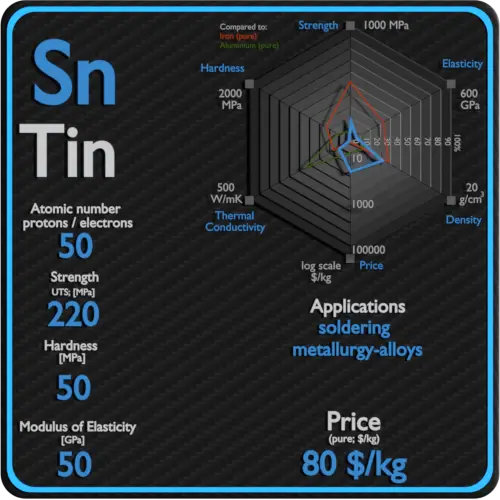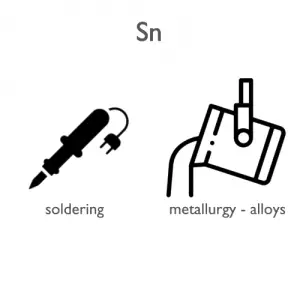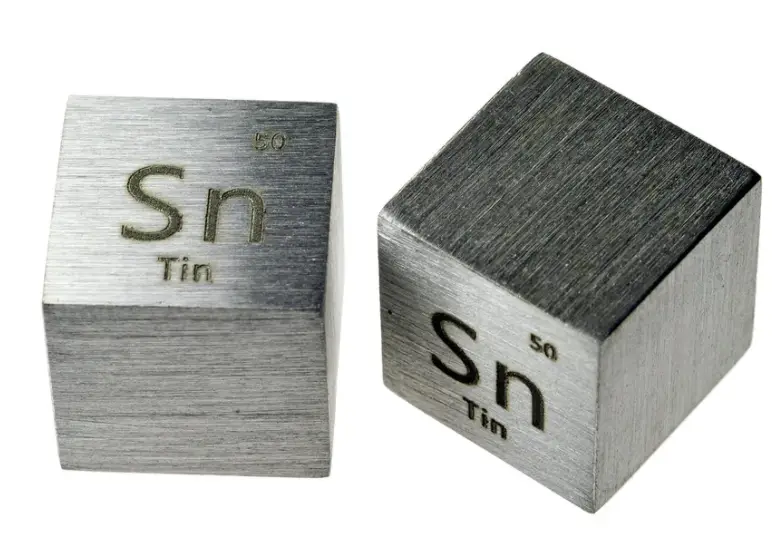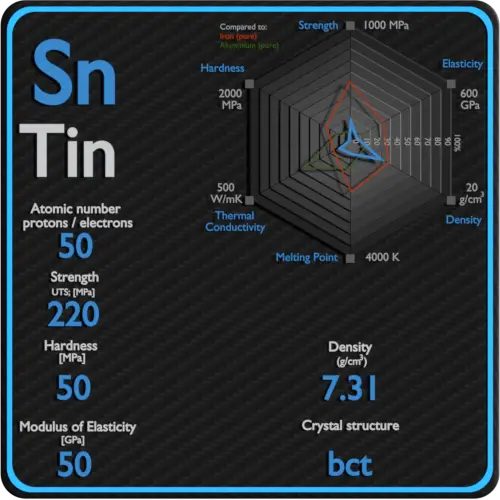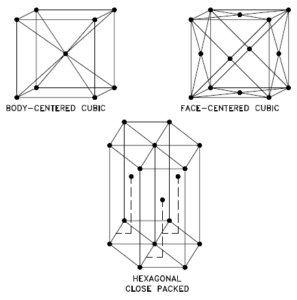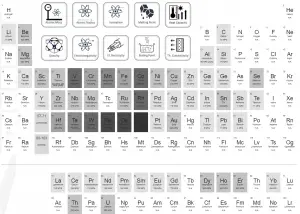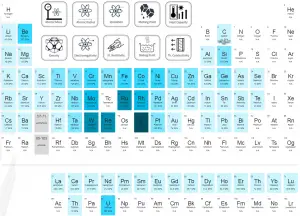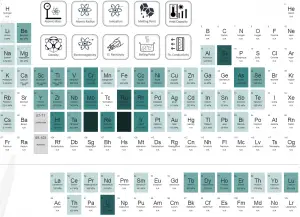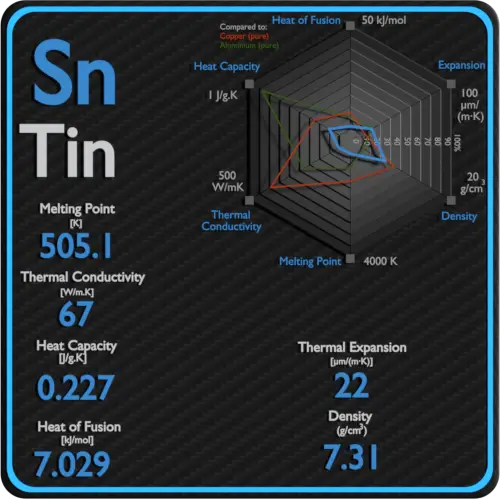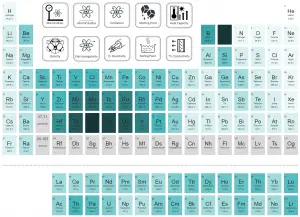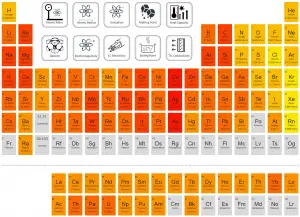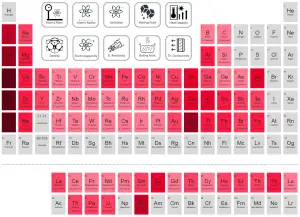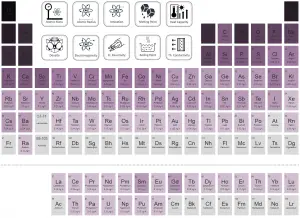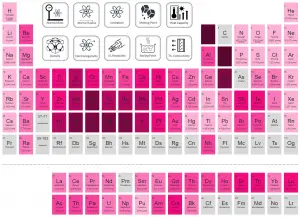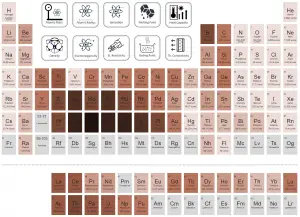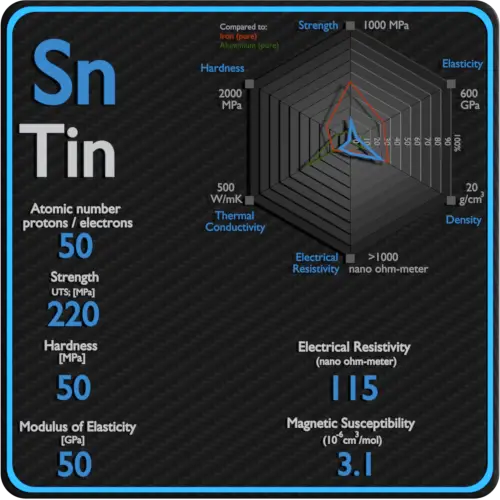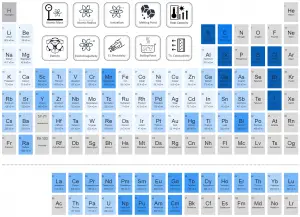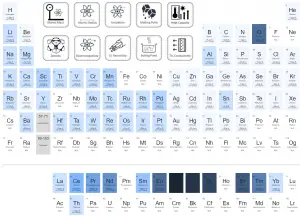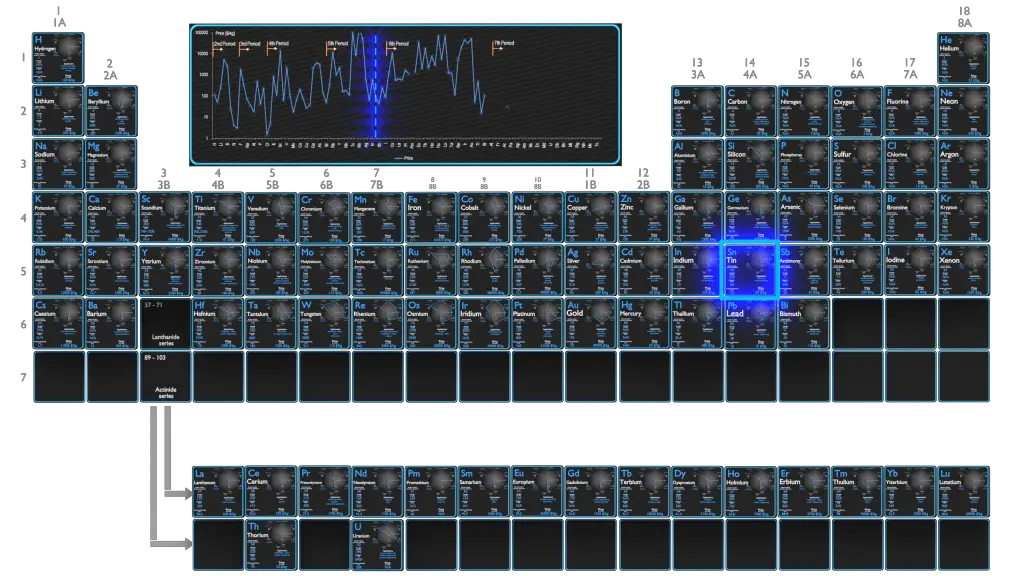About Tin
Tin is a post-transition metal in group 14 of the periodic table. It is obtained chiefly from the mineral cassiterite, which contains tin dioxide. The first alloy used on a large scale was bronze, made of tin and copper, from as early as 3000 BC.
Summary
| Element | Tin |
| Atomic number | 50 |
| Element category | Poor Metal |
| Phase at STP | Solid |
| Density | 7.31 g/cm3 |
| Ultimate Tensile Strength | 220 MPa |
| Yield Strength | N/A |
| Young’s Modulus of Elasticity | 50 GPa |
| Mohs Scale | 1.65 |
| Brinell Hardness | 50 MPa |
| Vickers Hardness | N/A |
| Melting Point | 231.93 °C |
| Boiling Point | 2602 °C |
| Thermal Conductivity | 67 W/mK |
| Thermal Expansion Coefficient | 22 µm/mK |
| Specific Heat | 0.227 J/g K |
| Heat of Fusion | 7.029 kJ/mol |
| Heat of Vaporization | 295.8 kJ/mol |
| Electrical resistivity [nanoOhm meter] | 115 |
| Magnetic Susceptibility | +3.1e-6 cm^3/mol |
Applications of Tin
The largest single application of tin is in the manufacture of tinplate (steel sheet coated with tin), which accounts for approximately 40% of total world tin consumption. Tin bonds readily to iron and steel to prevent corrosion. Tin-plated steel containers are widely used for food preservation, and this forms a large part of the market for metallic tin. Tinning is the process of thinly coating sheets of wrought iron or steel with tin, and the resulting product is known as tinplate. The term is also widely used for the different process of coating a metal with solder before soldering. There are two processes for the tinning of the black plates: hot-dipping and electroplating.
Production and Price of Tin
Raw materials prices change daily. They are primarily driven by supply, demand and energy prices. In 2019, prices of pure Tin were at around 80 $/kg.
China led the world in tin production in the early 21st century, accounting for nearly half of all production; Indonesia, Peru, and Bolivia were also top producers. Tin is produced by carbothermic reduction of the oxide ore with carbon or coke. Both reverberatory furnace and electric furnace can be used. In 2006, total worldwide tin mine production was 321,000 tons, and smelter production was 340,000 tons. From its production level of 186,300 tons in 1991, around where it had hovered for the previous decades, production of tin increased 89% to 351,800 tons in 2005.
Source: www.luciteria.com
Mechanical Properties of Tin
Strength of Tin
In mechanics of materials, the strength of a material is its ability to withstand an applied load without failure or plastic deformation. Strength of materials basically considers the relationship between the external loads applied to a material and the resulting deformation or change in material dimensions. In designing structures and machines, it is important to consider these factors, in order that the material selected will have adequate strength to resist applied loads or forces and retain its original shape. Strength of a material is its ability to withstand this applied load without failure or plastic deformation.
For tensile stress, the capacity of a material or structure to withstand loads tending to elongate is known as ultimate tensile strength (UTS). Yield strength or yield stress is the material property defined as the stress at which a material begins to deform plastically whereas yield point is the point where nonlinear (elastic + plastic) deformation begins.
See also: Strength of Materials
Ultimate Tensile Strength of Tin
Ultimate tensile strength of Tin is 220 MPa.
Yield Strength of Tin
Yield strength of Tin is N/A.
Modulus of Elasticity of Tin
The Young’s modulus of elasticity of Tin is N/A.
Hardness of Tin
In materials science, hardness is the ability to withstand surface indentation (localized plastic deformation) and scratching. Brinell hardness test is one of indentation hardness tests, that has been developed for hardness testing. In Brinell tests, a hard, spherical indenter is forced under a specific load into the surface of the metal to be tested.
Brinell hardness of Tin is approximately 50 MPa.
The Vickers hardness test method was developed by Robert L. Smith and George E. Sandland at Vickers Ltd as an alternative to the Brinell method to measure the hardness of materials. The Vickers hardness test method can be also used as a microhardness test method, which is mostly used for small parts, thin sections, or case depth work.
Vickers hardness of Tin is approximately N/A.
Scratch hardness is the measure of how resistant a sample is to permanent plastic deformation due to friction from a sharp object. The most common scale for this qualitative test is Mohs scale, which is used in mineralogy. The Mohs scale of mineral hardness is based on the ability of one natural sample of mineral to scratch another mineral visibly.
Tin is has a hardness of approximately 1.65.
See also: Hardness of Materials
Tin – Crystal Structure
A possible crystal structure of Tin is body-centered tetragonal structure.
In metals, and in many other solids, the atoms are arranged in regular arrays called crystals. A crystal lattice is a repeating pattern of mathematical points that extends throughout space. The forces of chemical bonding causes this repetition. It is this repeated pattern which control properties like strength, ductility, density, conductivity (property of conducting or transmitting heat, electricity, etc.), and shape. There are 14 general types of such patterns known as Bravais lattices.
See also: Crystal Structure of Materials
Crystal Structure of Tin

Thermal Properties of Tin
Tin – Melting Point and Boiling Point
Melting point of Tin is 231.93°C.
Boiling point of Tin is 2602°C.
Note that, these points are associated with the standard atmospheric pressure.
Tin – Thermal Conductivity
Thermal conductivity of Tin is 67 W/(m·K).
The heat transfer characteristics of a solid material are measured by a property called the thermal conductivity, k (or λ), measured in W/m.K. It is a measure of a substance’s ability to transfer heat through a material by conduction. Note that Fourier’s law applies for all matter, regardless of its state (solid, liquid, or gas), therefore, it is also defined for liquids and gases.
Coefficient of Thermal Expansion of Tin
Linear thermal expansion coefficient of Tin is 22 µm/(m·K)
Thermal expansion is generally the tendency of matter to change its dimensions in response to a change in temperature. It is usually expressed as a fractional change in length or volume per unit temperature change.
Tin – Specific Heat, Latent Heat of Fusion, Latent Heat of Vaporization
Specific heat of Tin is 0.227 J/g K.
Heat capacity is an extensive property of matter, meaning it is proportional to the size of the system. Heat capacity C has the unit of energy per degree or energy per kelvin. When expressing the same phenomenon as an intensive property, the heat capacity is divided by the amount of substance, mass, or volume, thus the quantity is independent of the size or extent of the sample.
Latent Heat of Fusion of Tin is 7.029 kJ/mol.
Latent Heat of Vaporization of Tin is 295.8 kJ/mol.
Latent heat is the amount of heat added to or removed from a substance to produce a change in phase. This energy breaks down the intermolecular attractive forces, and also must provide the energy necessary to expand the gas (the pΔV work). When latent heat is added, no temperature change occurs. The enthalpy of vaporization is a function of the pressure at which that transformation takes place.
Tin – Electrical Resistivity – Magnetic Susceptibility
Electrical property refers to the response of a material to an applied electric field. One of the principal characteristics of materials is their ability (or lack of ability) to conduct electrical current. Indeed, materials are classified by this property, that is, they are divided into conductors, semiconductors, and nonconductors.
See also: Electrical Properties
Magnetic property refers to the response of a material to an applied magnetic field. The macroscopic magnetic properties of a material are a consequence of interactions between an external magnetic field and the magnetic dipole moments of the constituent atoms. Different materials react to the application of magnetic field differently.
See also: Magnetic Properties
Electrical Resistivity of Tin
Electrical resistivity of Tin is 115 nΩ⋅m.
Electrical conductivity and its converse, electrical resistivity, is a fundamental property of a material that quantifies how Tin conducts the flow of electric current. Electrical conductivity or specific conductance is the reciprocal of electrical resistivity.
Magnetic Susceptibility of Tin
Magnetic susceptibility of Tin is +3.1e-6 cm^3/mol.
In electromagnetism, magnetic susceptibility is the measure of the magnetization of a substance. Magnetic susceptibility is a dimensionless proportionality factor that indicates the degree of magnetization of Tin in response to an applied magnetic field.
